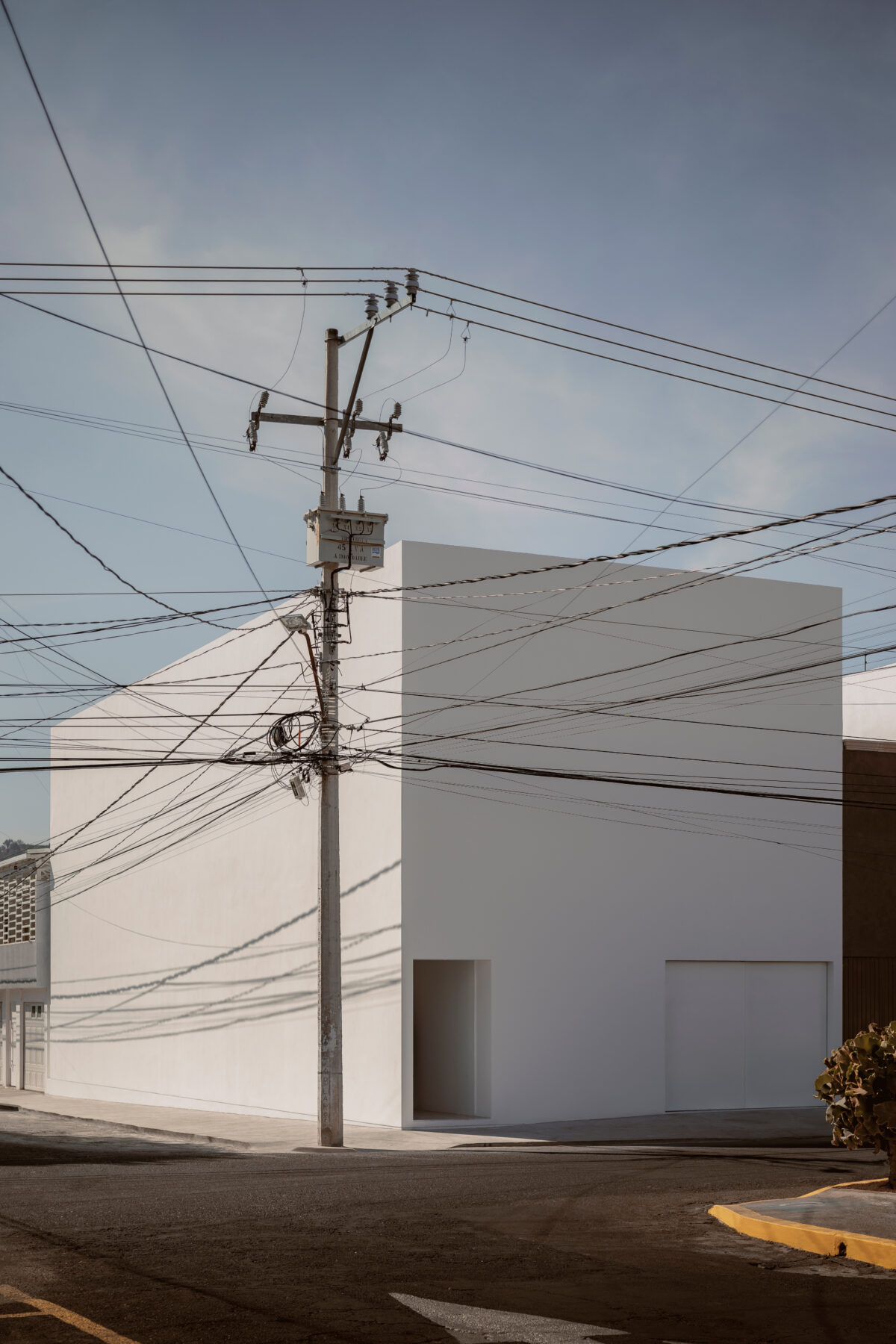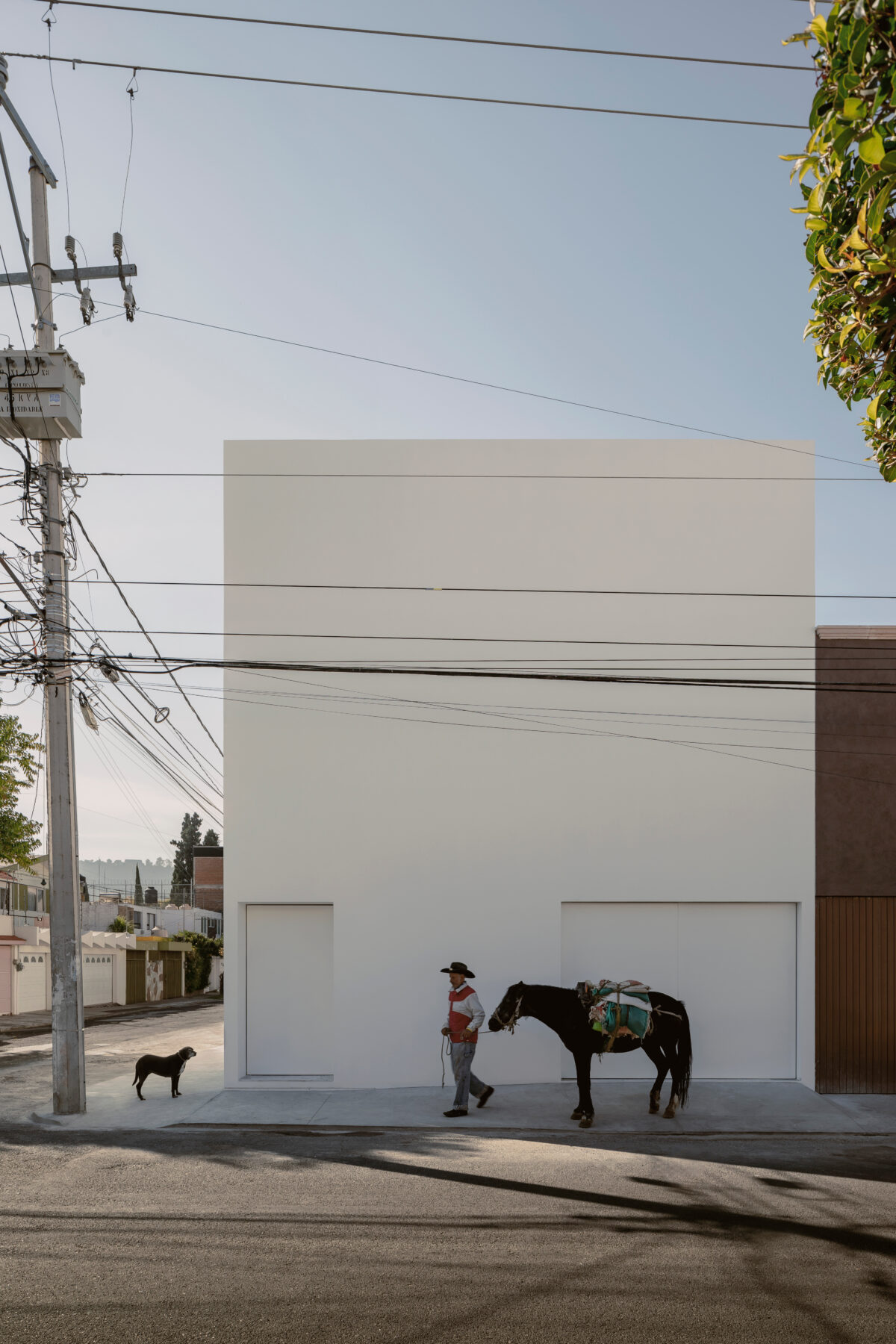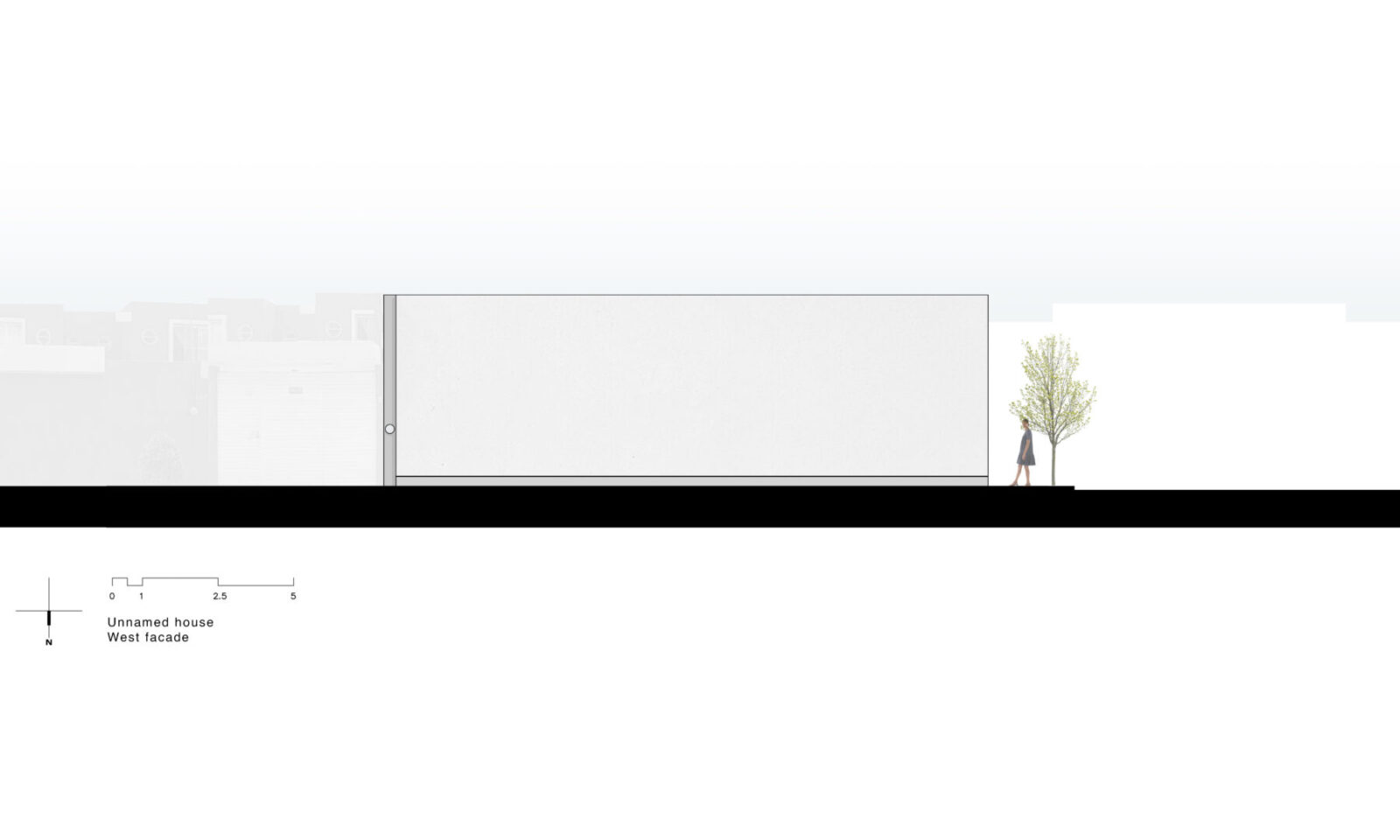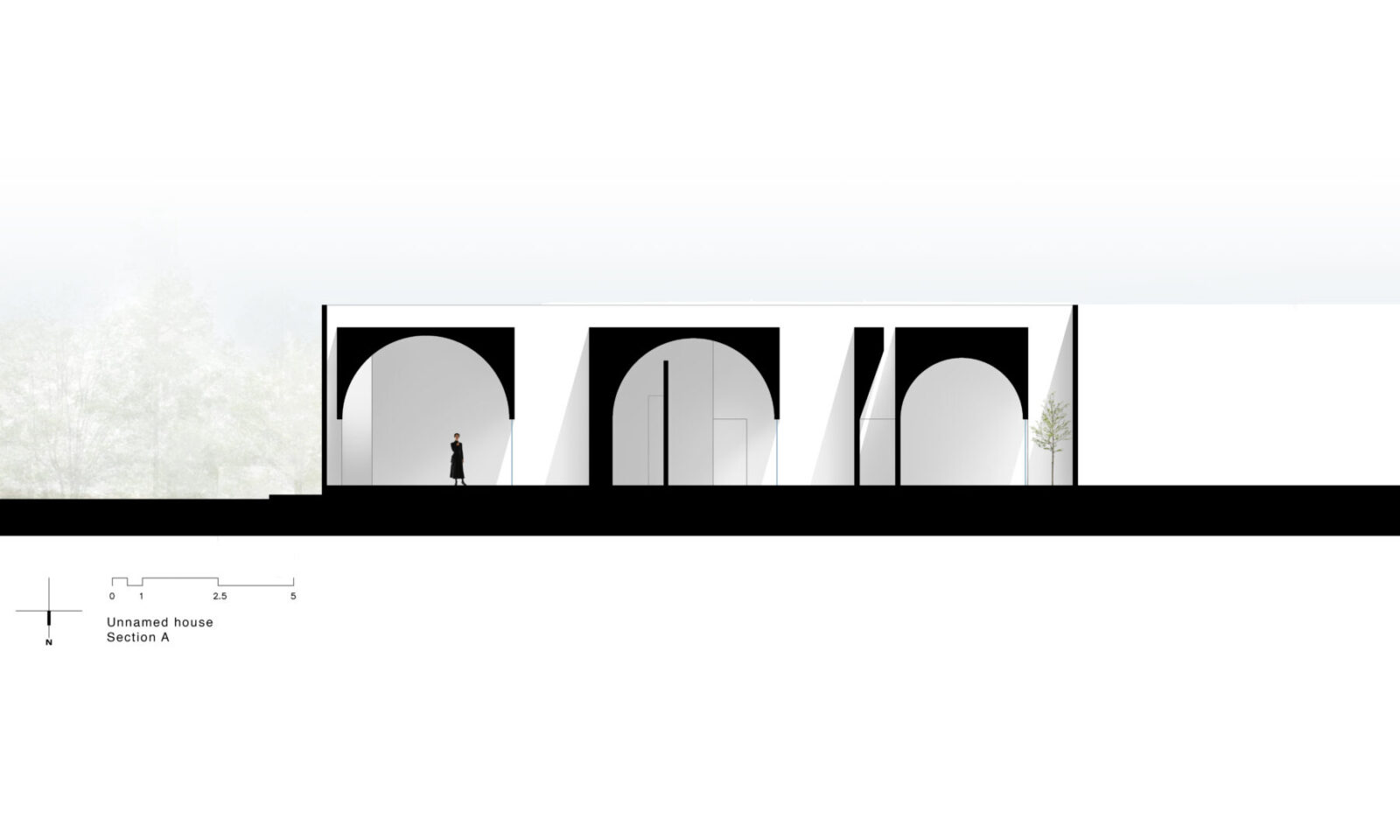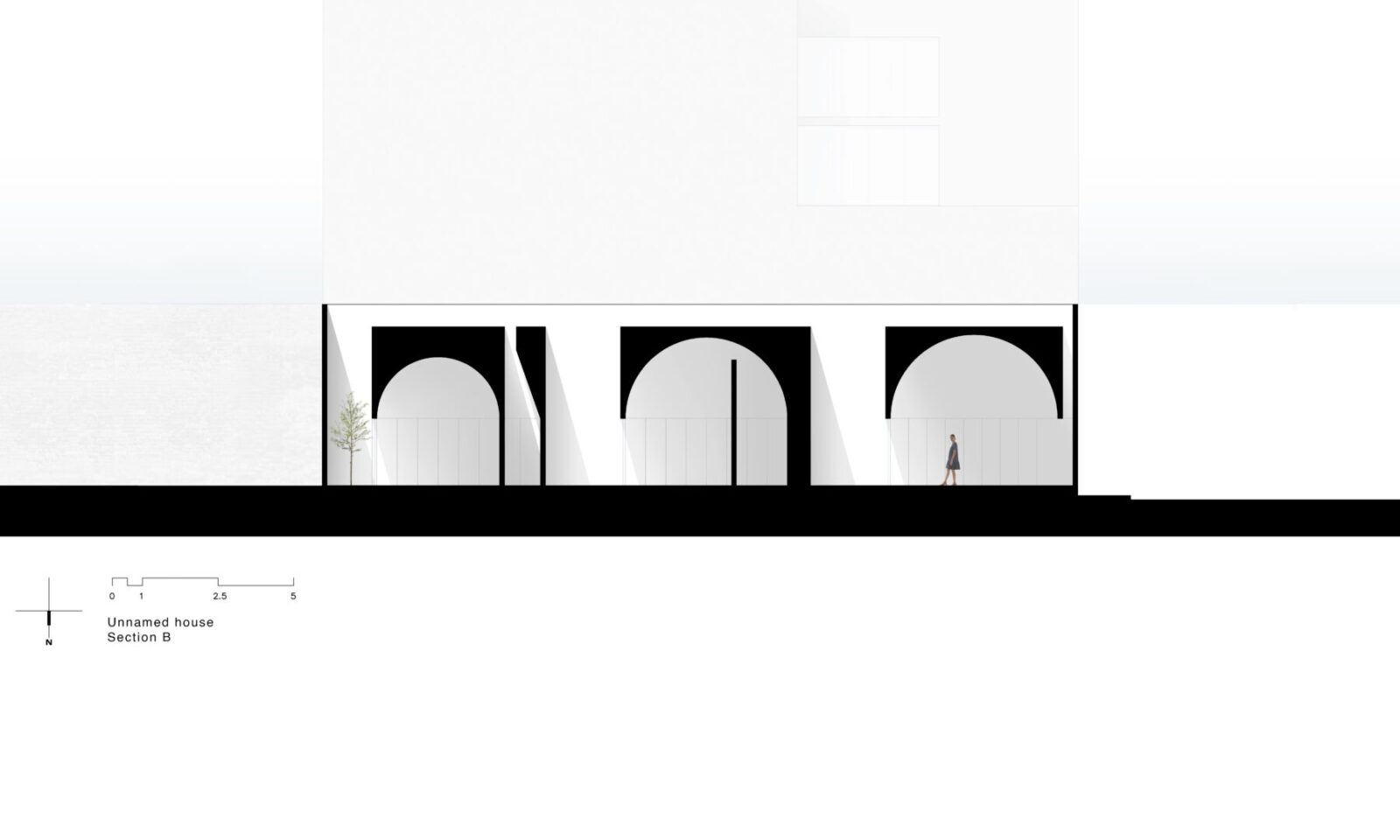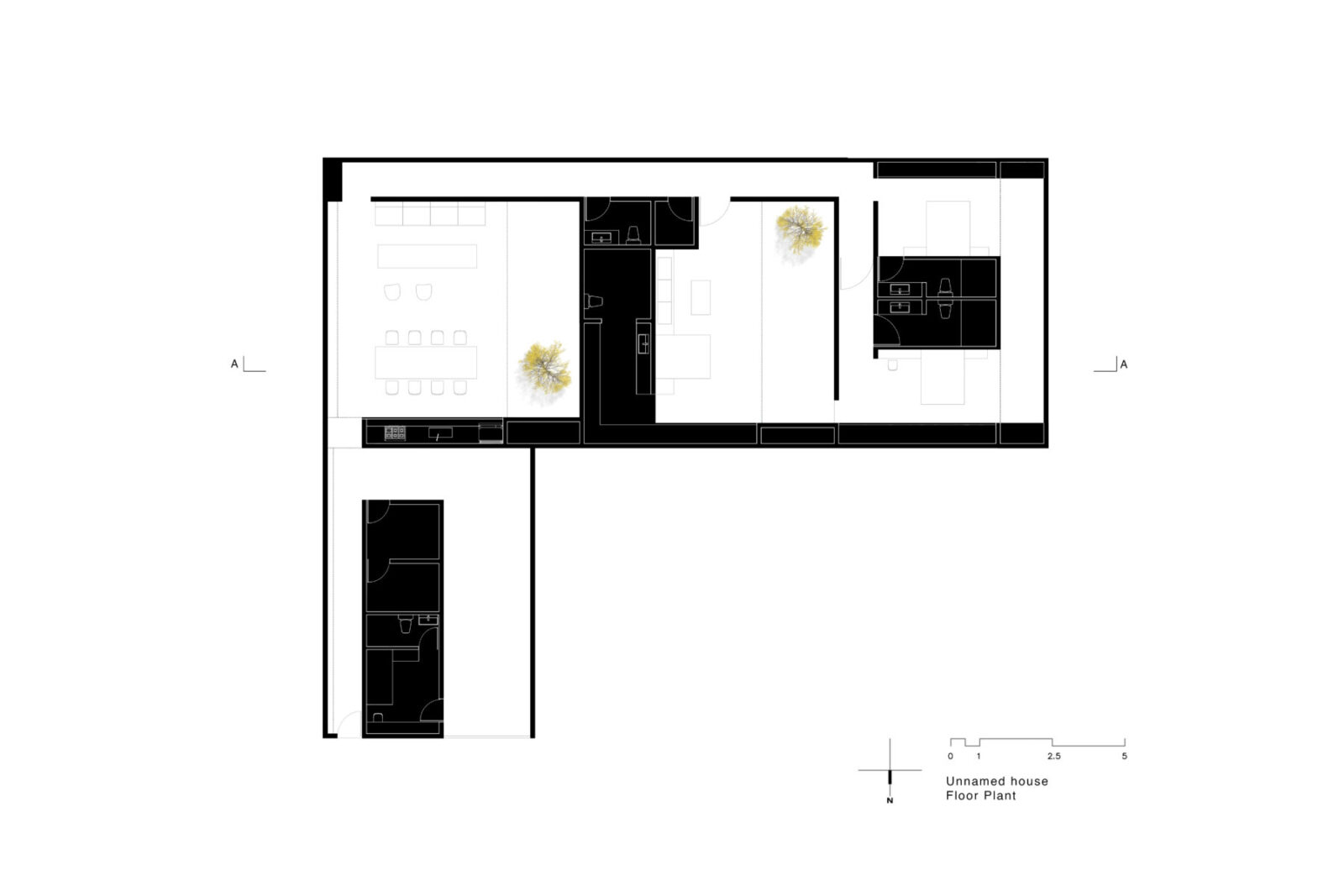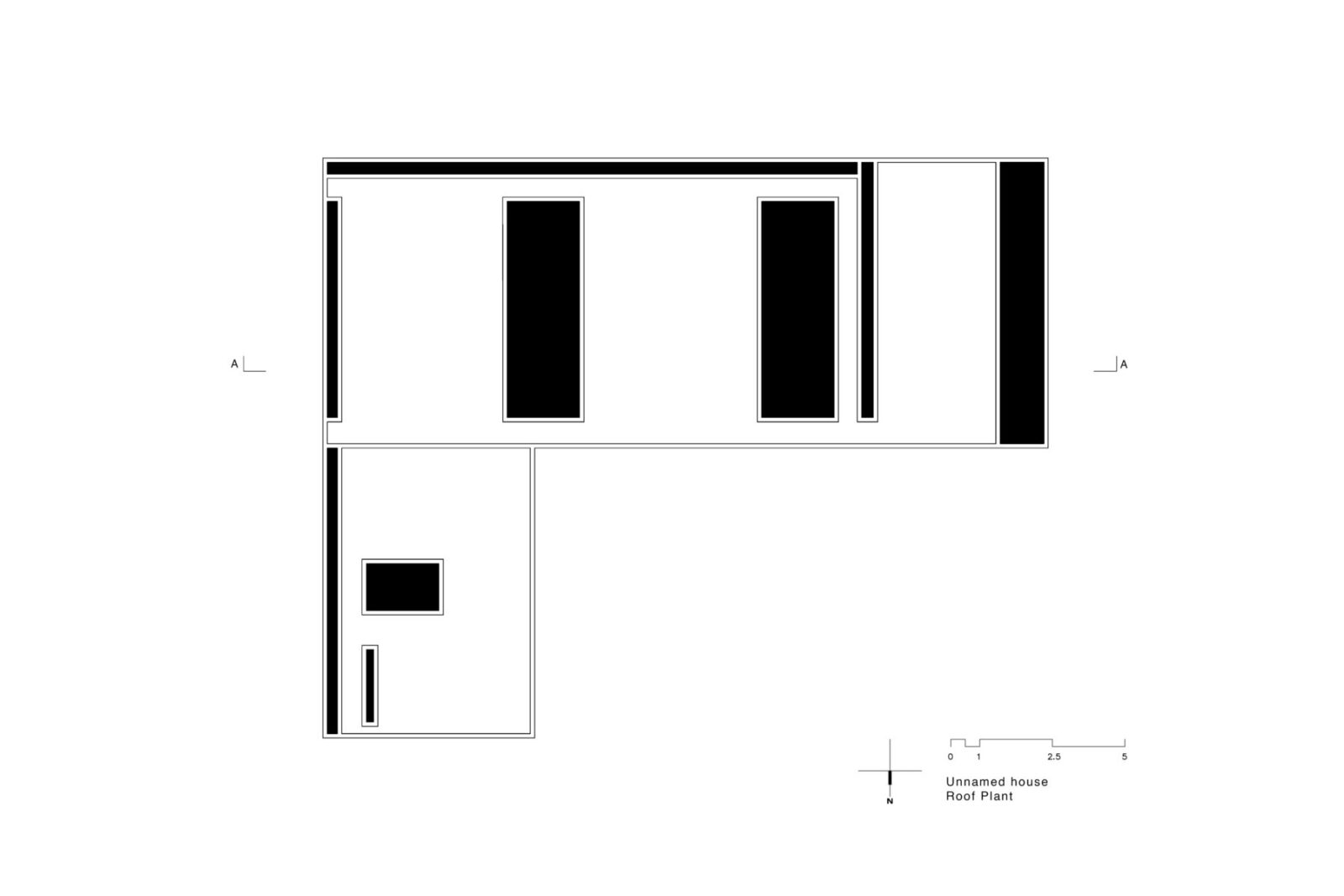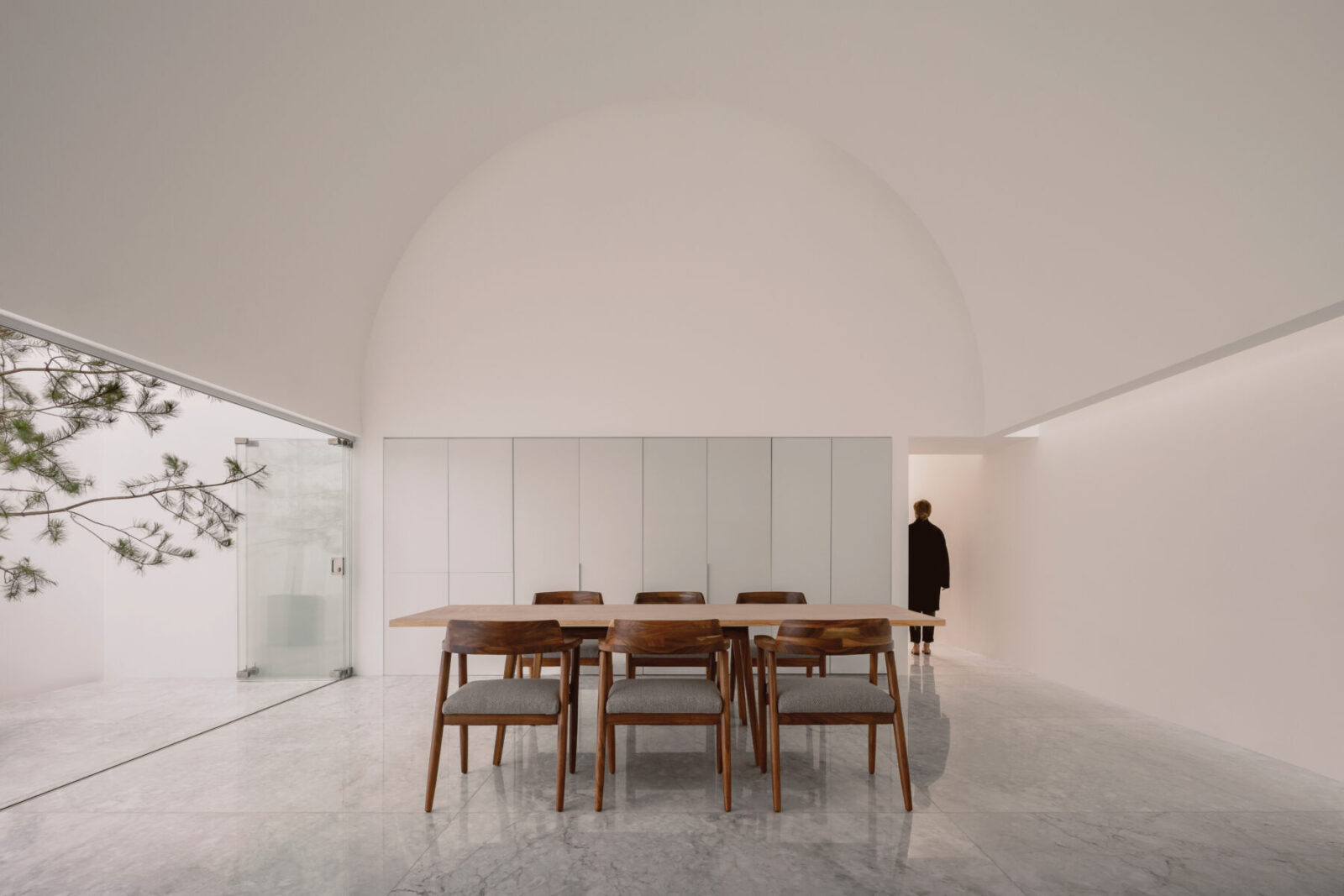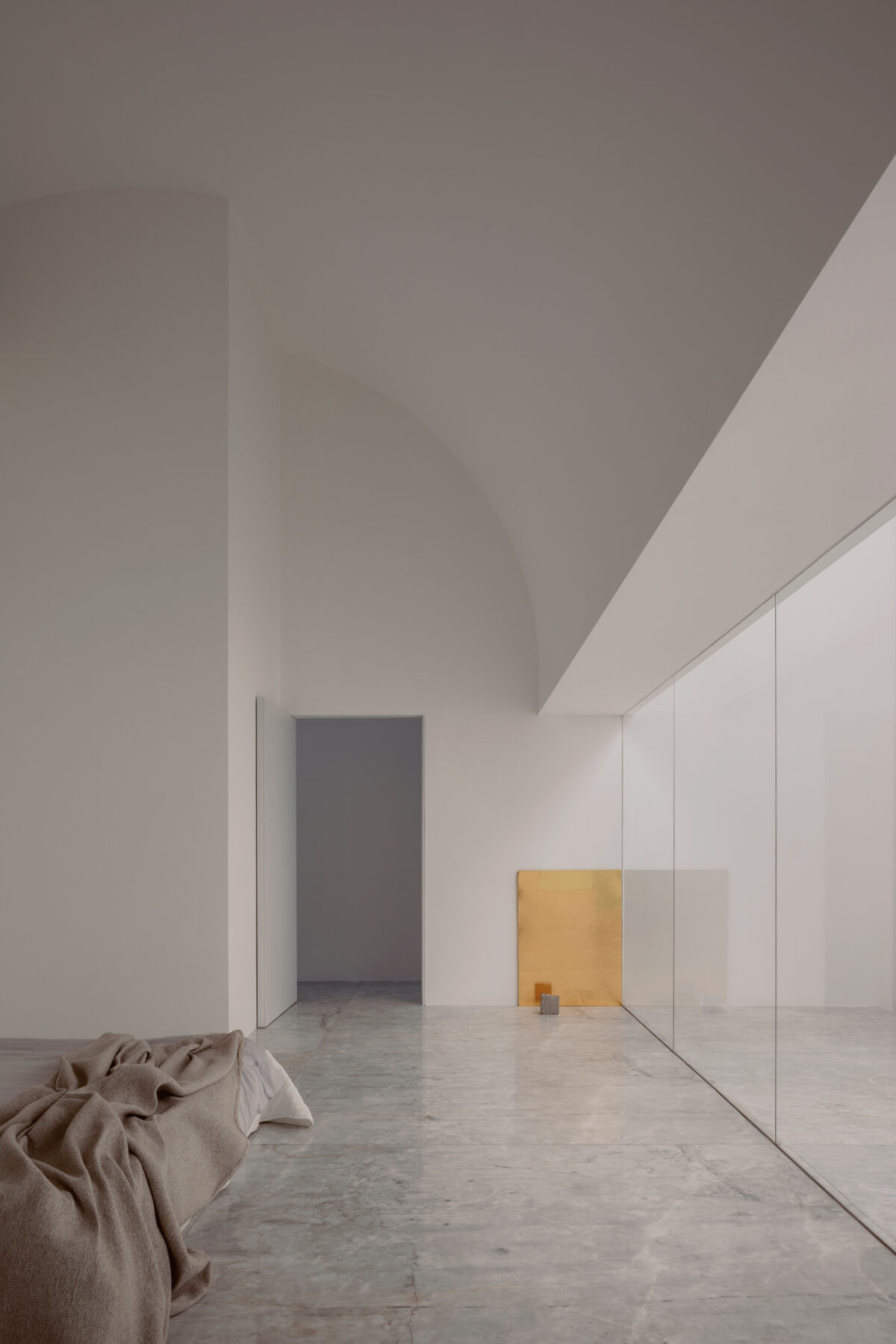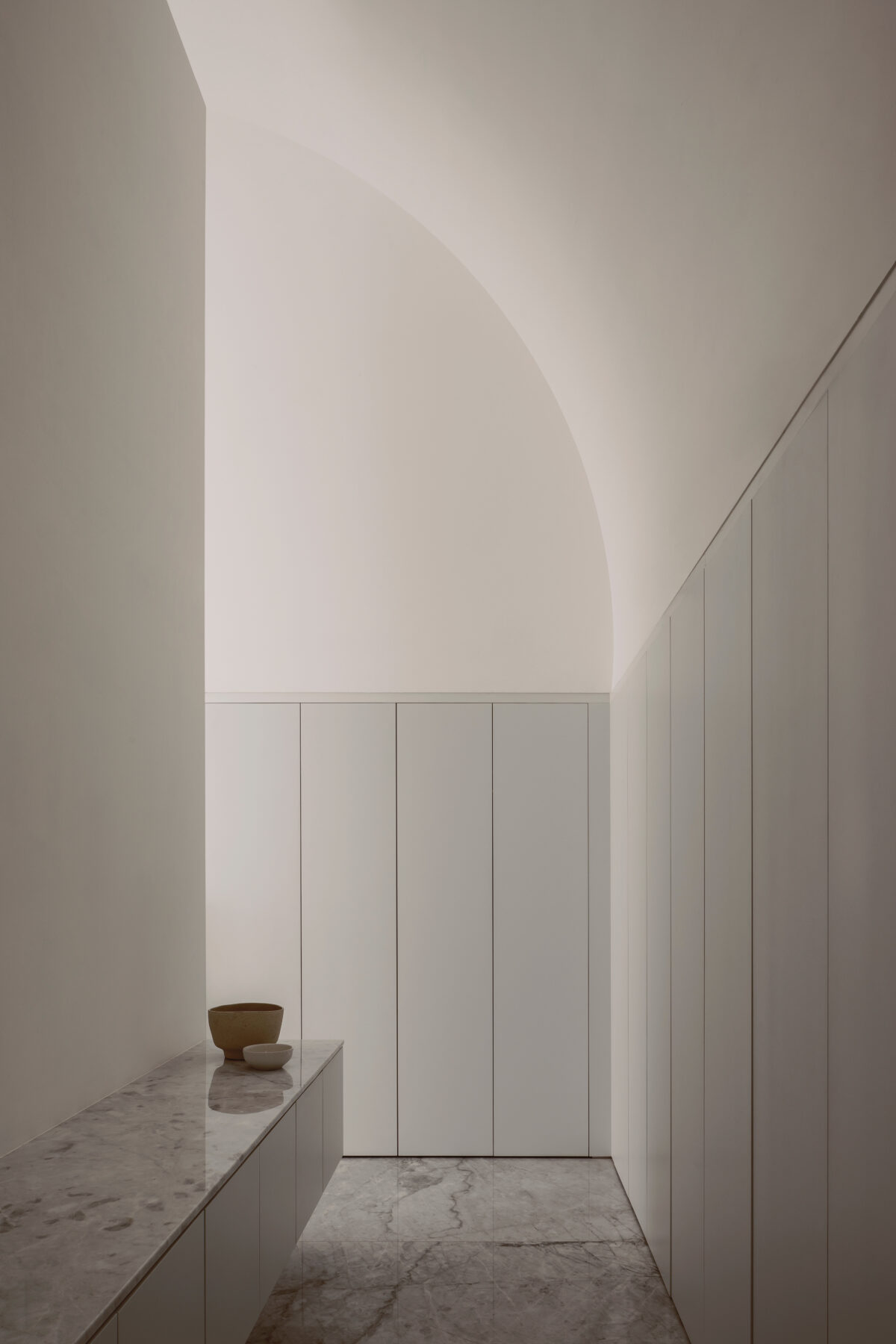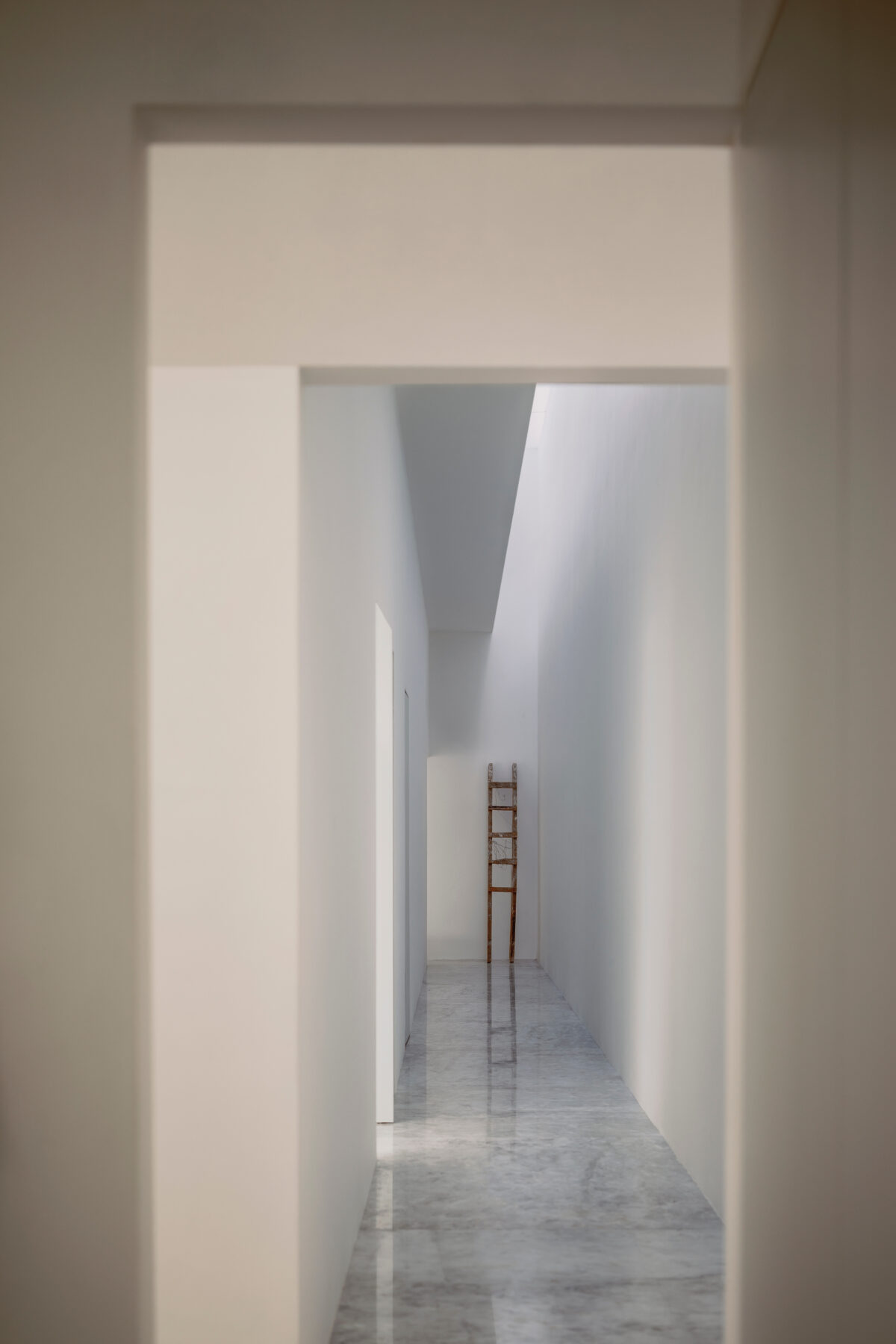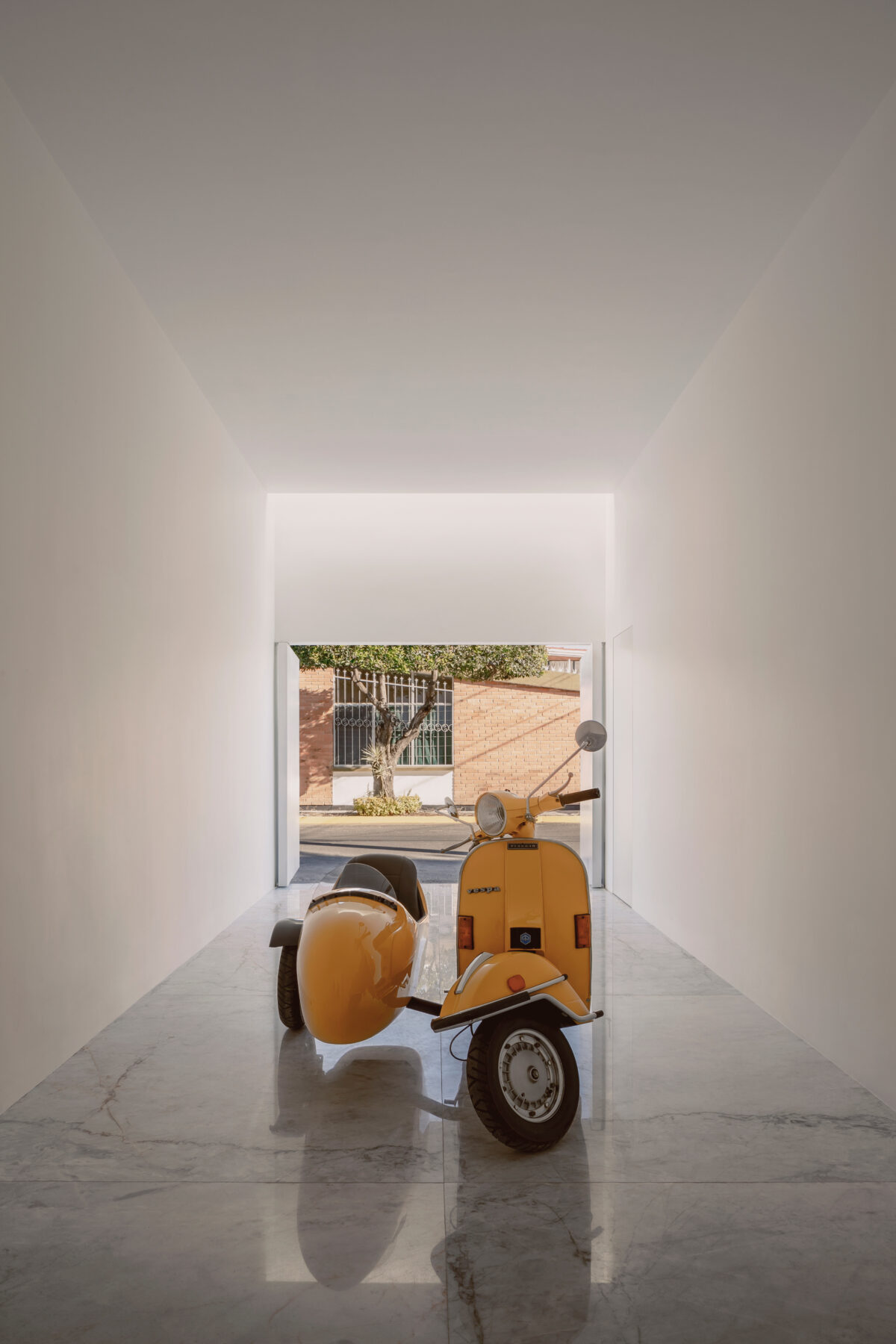Main request of project’s owners for their new home, was safety. The creation of an austere volume, a white box, with high walls and no windows facing the outside, that enclosed all the spaces of the house inside, answered that request. Architect’s also combined the family’s religious spirit, by using elements from the convent architecture, geometries and forms ispired by the sacred spaces, in order to “make the family feel protected and secure both physically and spiritually”.
The inside was kept minimal and white, acting like a blank canvas ready for personalization by the inhabitants.
A deep religious vocation and a robbery are the circumstances that gave rise to the fundamental decisions of this architectural project.
During the design process, the future inhabitants of this house shared the experience of being victims of a robbery in their home while they were away. This situation made them feel exposed and vulnerable, especially considering that the neighborhood constantly experiences an increase in crime rates. Nevertheless, their strong connection to the land and deep roots prevented them from leaving the place where they had built their lives.
For this reason, they were seeking a discreet, austere, and unadorned architectural project, with high walls and no windows facing the outside. They believed that this would be the way architecture could restore the sense of security they had lost.
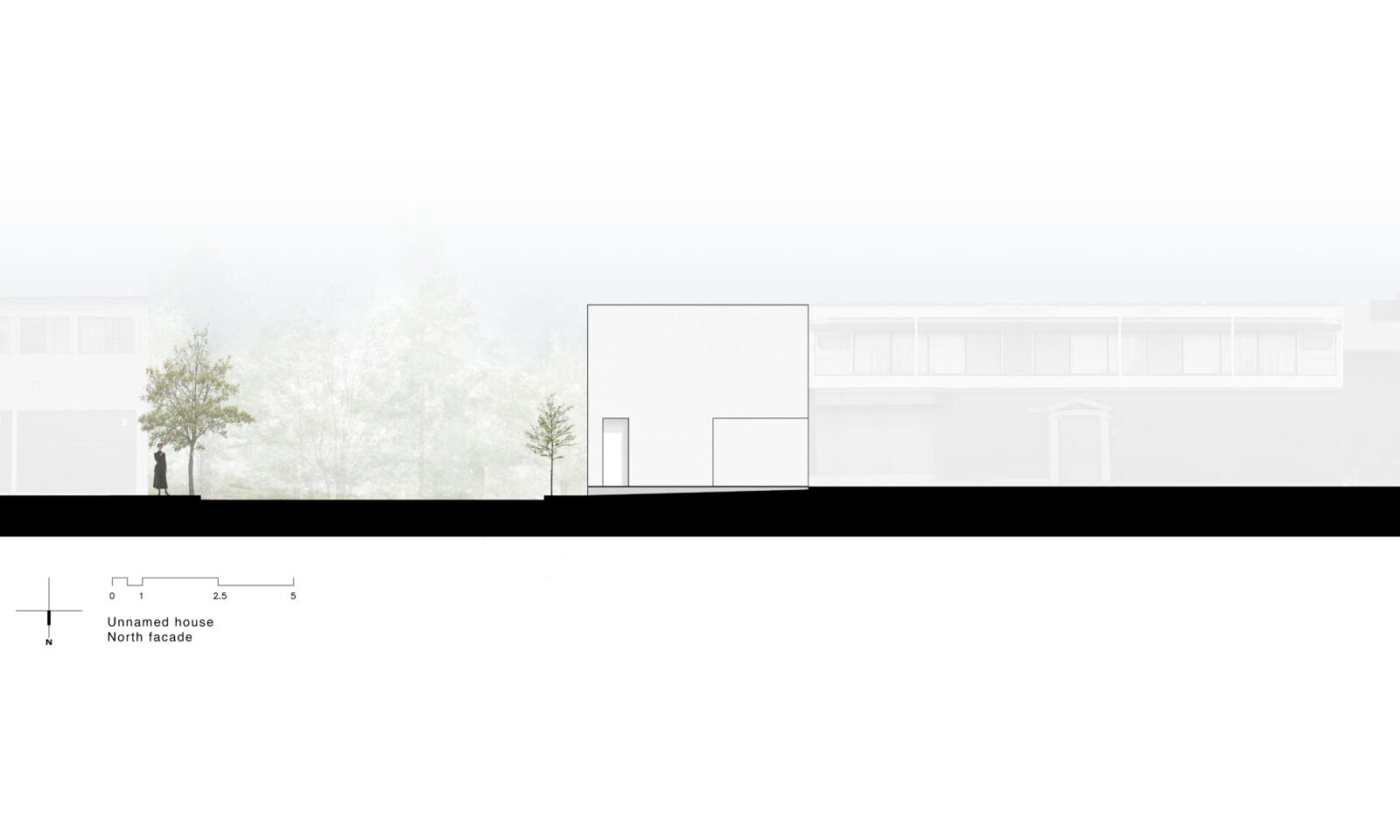
These understandable requests were combined with the immense religious vocation that was discovered during the design process: “When we saw their current house, it was a great surprise to discover the enormous amount of crucifixes, virgins, angels, religious objects, and baroque elements that filled the space.” To our surprise, they were seeking the opposite: a cold and even sterile minimalism that was sometimes difficult for us to digest.
In a way, they wanted to get rid of all that, but we felt that the house should evoke a certain religious spirit. This would be achieved through forms that recalled those sacred spaces that made them feel protected and secure both physically and spiritually. Convent architecture provided us with an appropriate guide to fulfill this commission.
The house, like a convent, is organised around a sequence of courtyards; each courtyard is accompanied by a space covered by a barrel vault that blurs the limits of the roof, softens the light, and pays homage to the numerous baroque churches in the city.
Thus, the architecture in this case seeks to provide a solution to the unpleasant circumstance they experienced, aided by a deep faith that is reinforced by legible forms, light, and space.
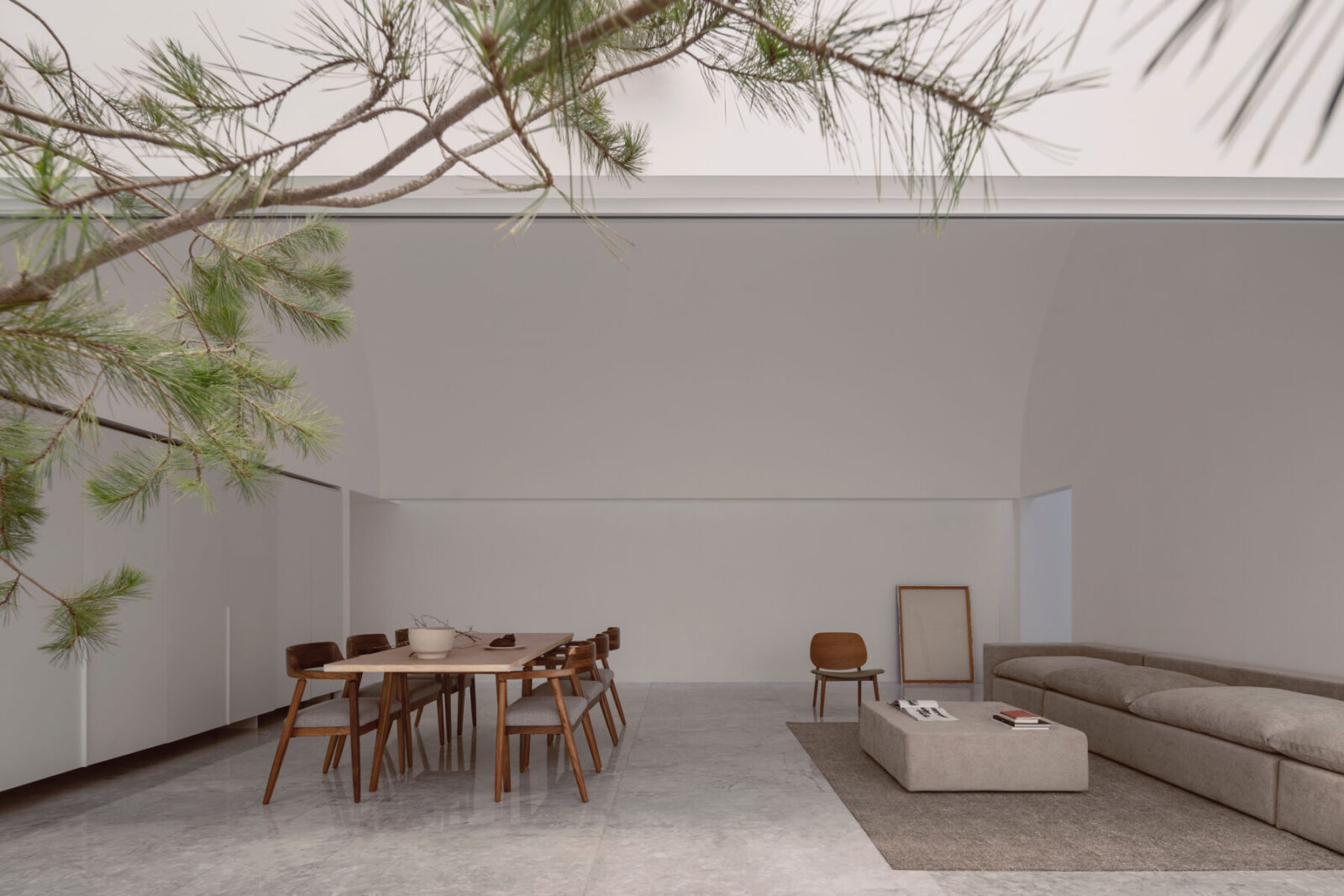
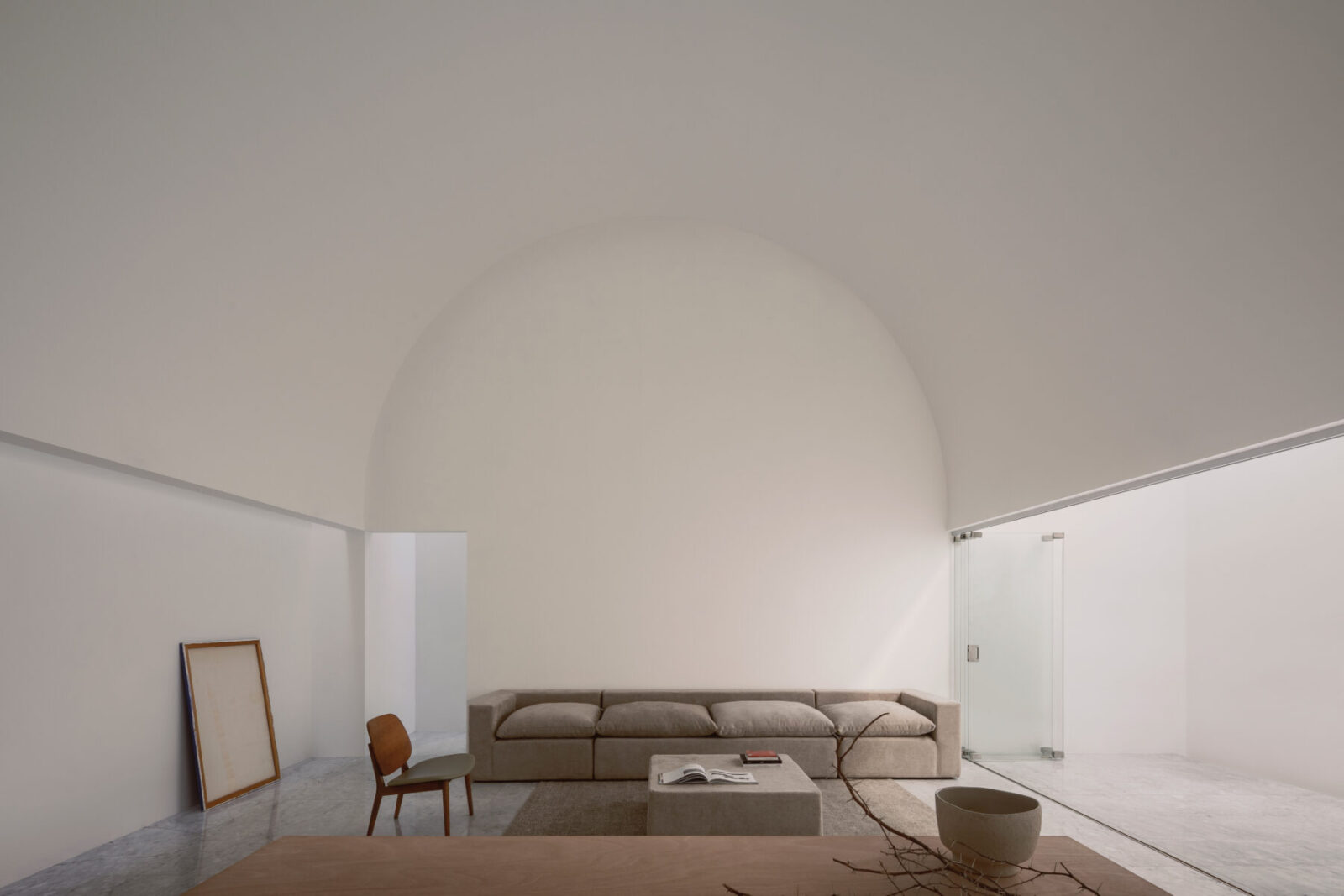
It is a sober and simple structure that seems to defy the complexity and eclecticism of the surrounding buildings. However, this contrast is not fortuitous nor does it intend to impose itself on its environment. Instead, the house presents itself as a blank canvas, an open space for appropriation and personalization by its owners. In this sense, its cleanliness and simplicity are not limitations but an invitation to creativity and experimentation.
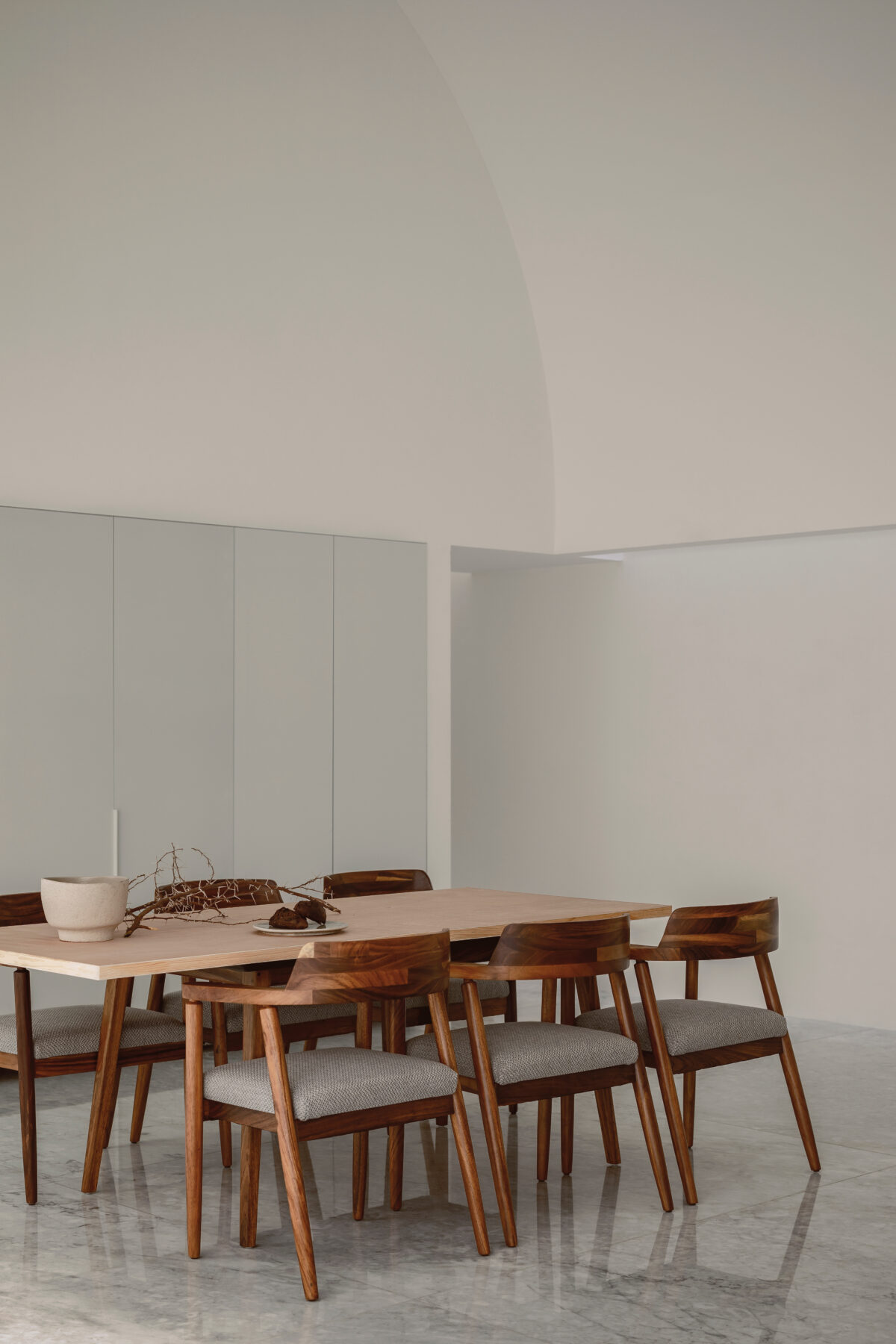
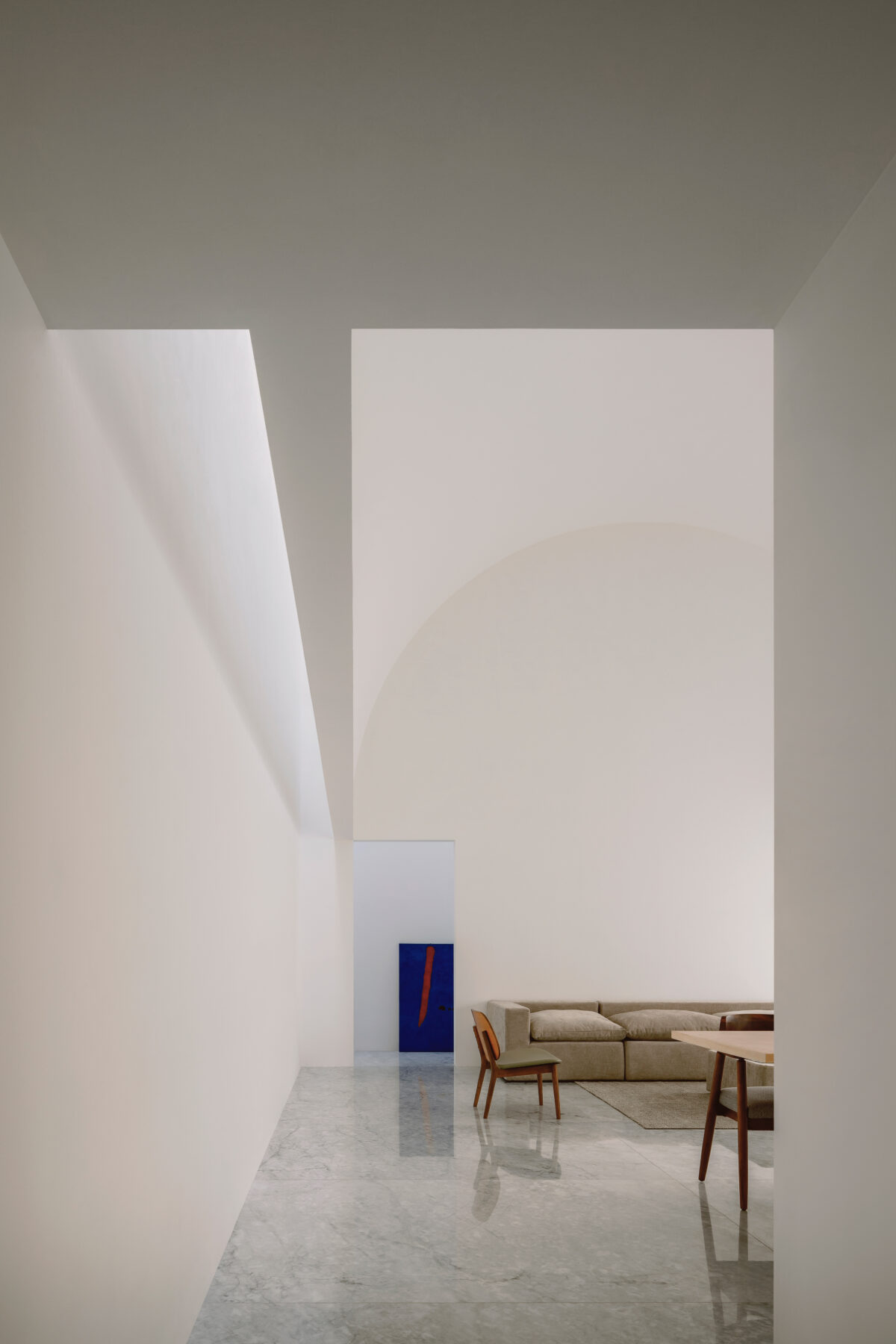
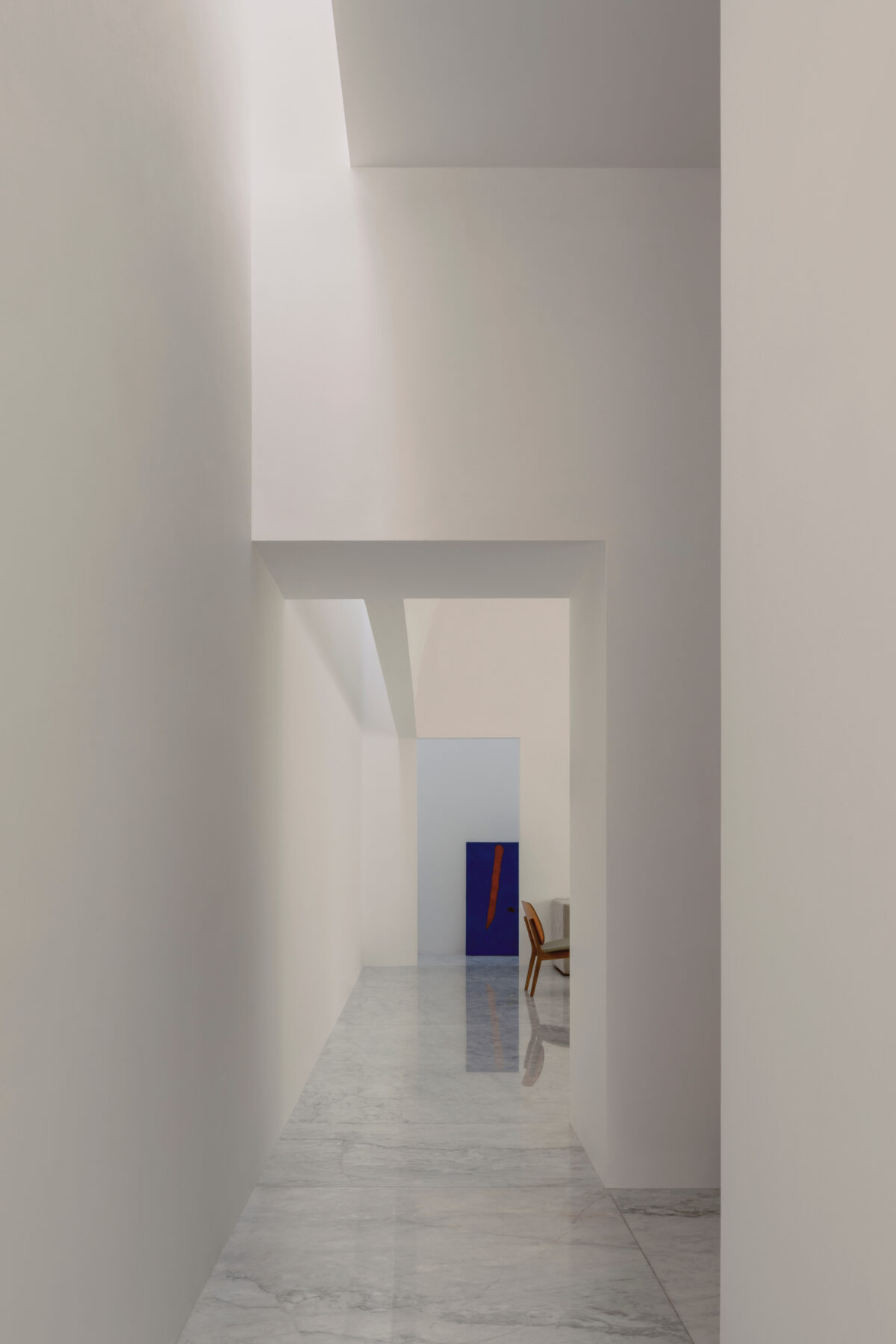
The house is located in a neighbourhood where the first modern constructions of Morelia were erected, but where each owner has appropriated them and personalised them to their liking, creating an eclectic and diverse mix that is hardly defined in terms of style, trend, or line. In this context, the white box emerges as a starting point for future transformations. Its contrasting presence and openness to modification and personalization can be interpreted as a way to perpetuate the tradition of the neighbourhood while opening up to new possibilities for change and evolution.
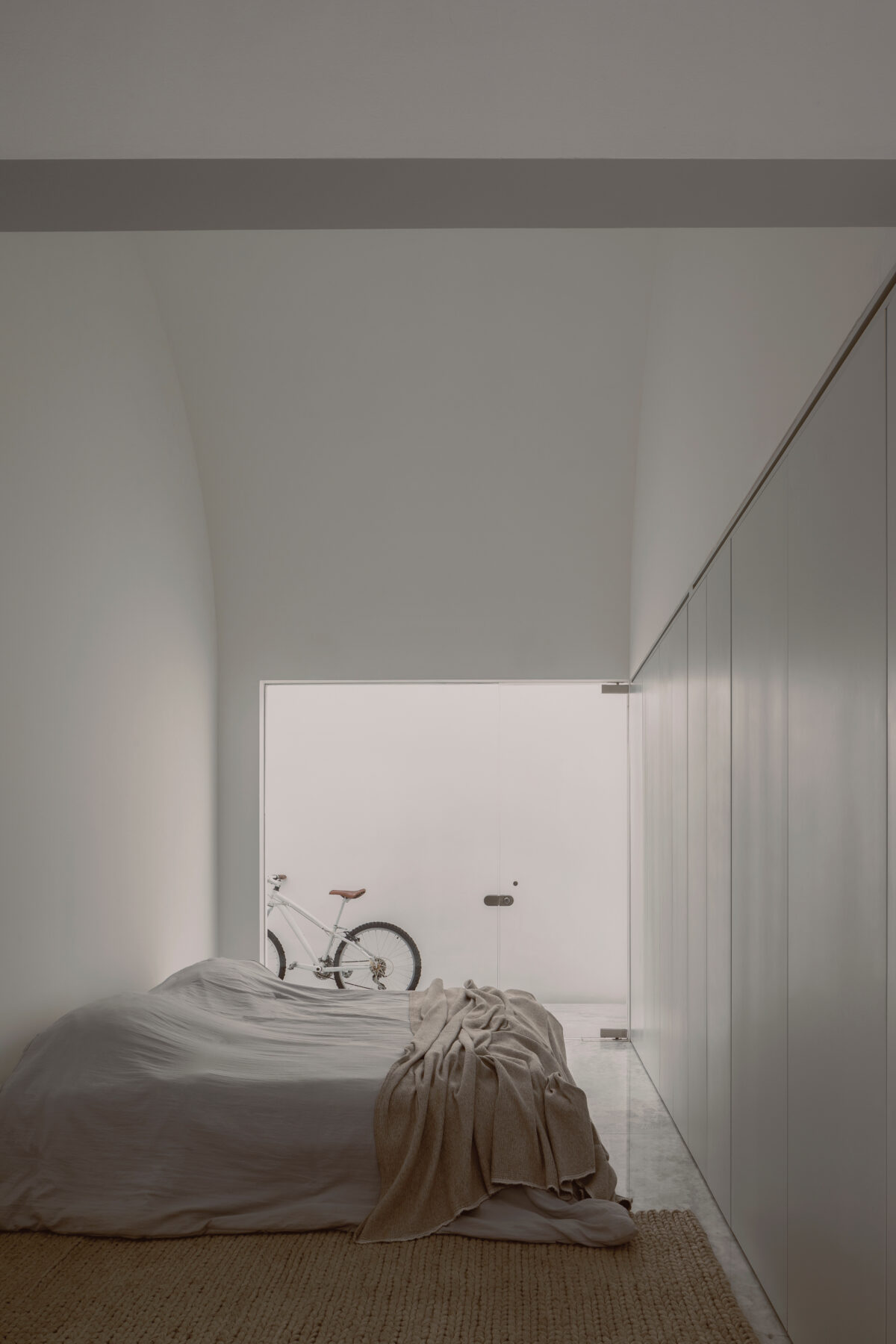
It is a sober structure that seems to challenge the complexity and eclecticism of its surroundings but actually seeks to establish a creative and dynamic dialogue with it. Its cleanliness and simplicity are a call to continue the dynamic of appropriation that has characterized the neighborhood over time. It is a house that aims to perpetuate the tradition of customization and constant transformation of the houses in Chapultepec.
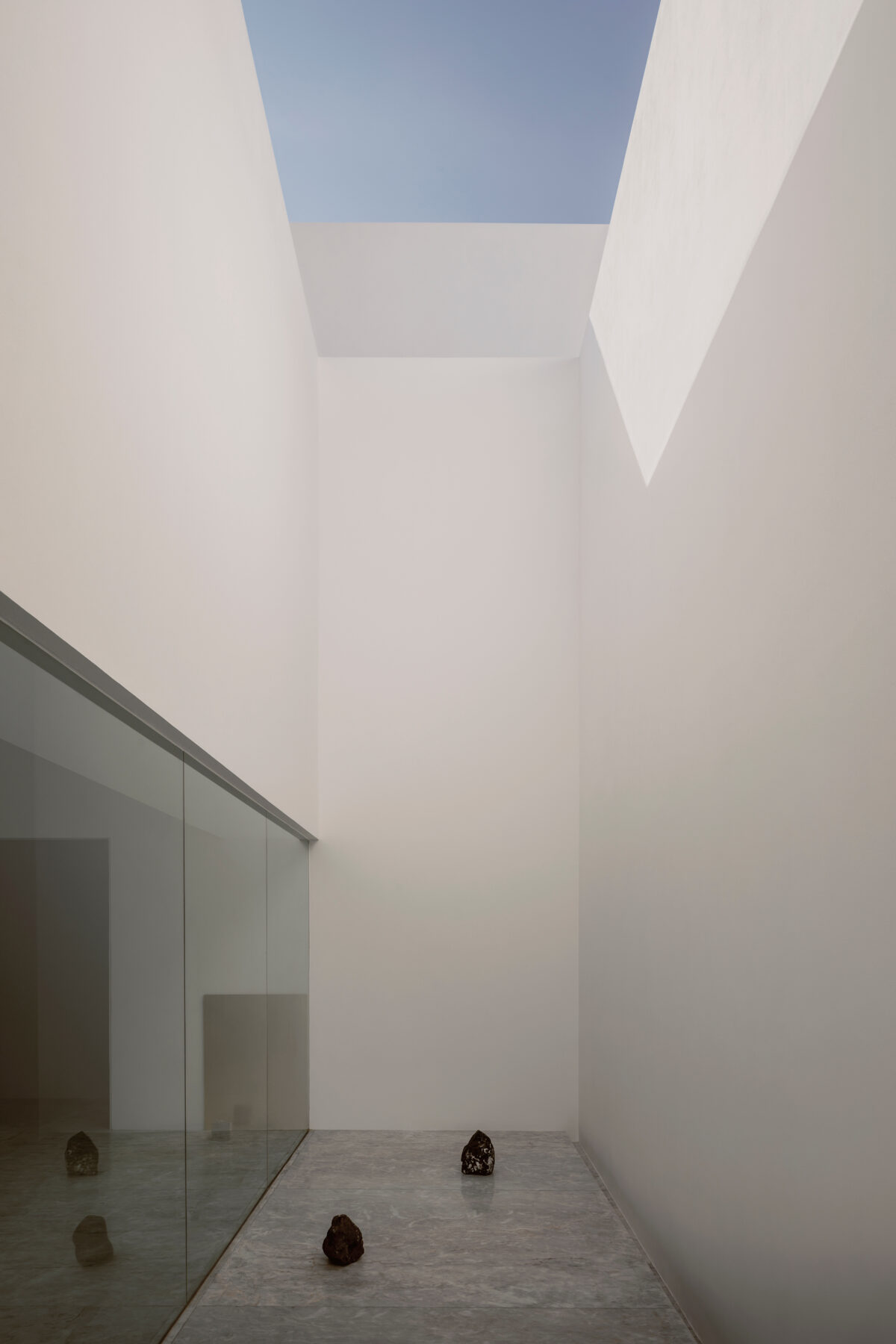
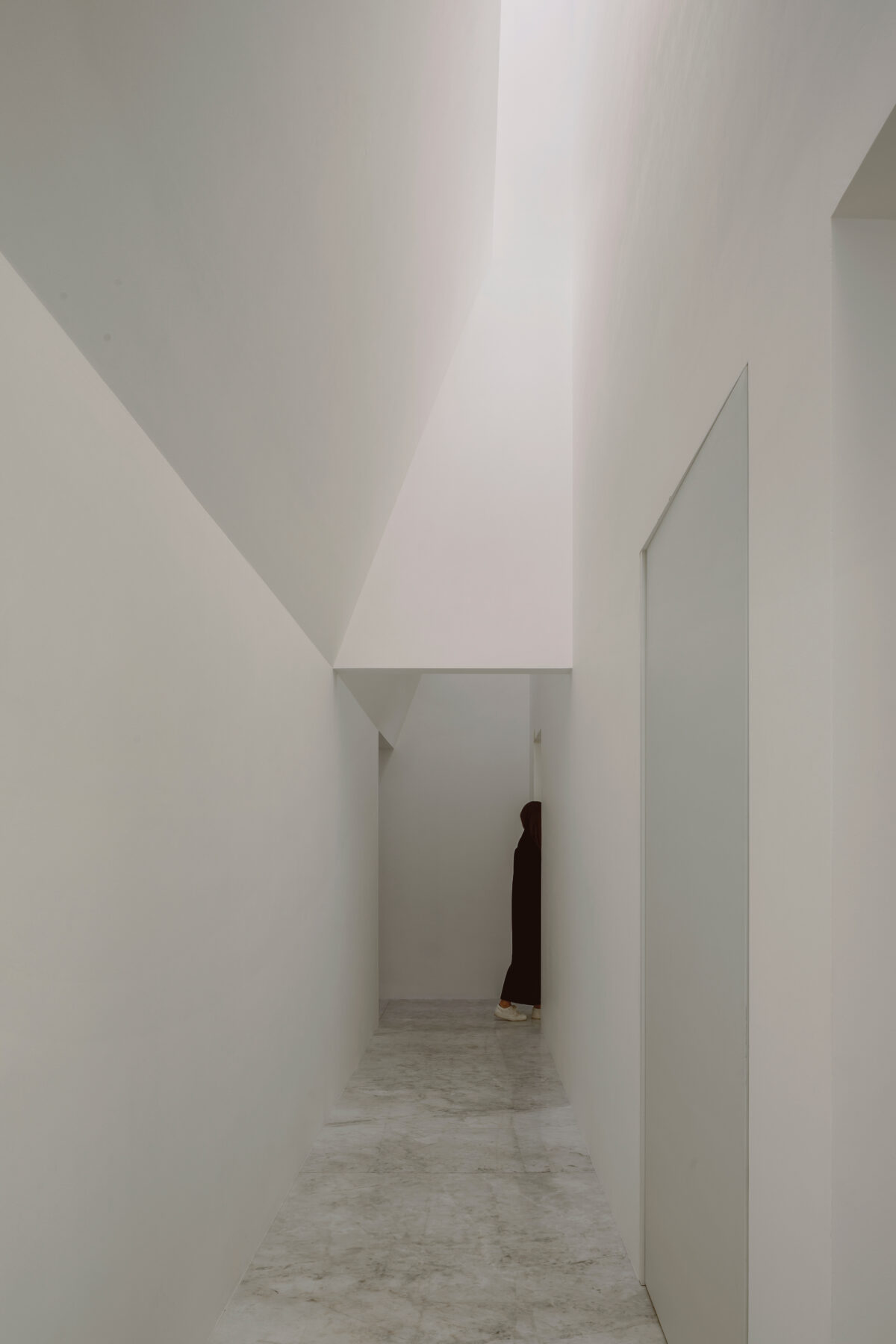
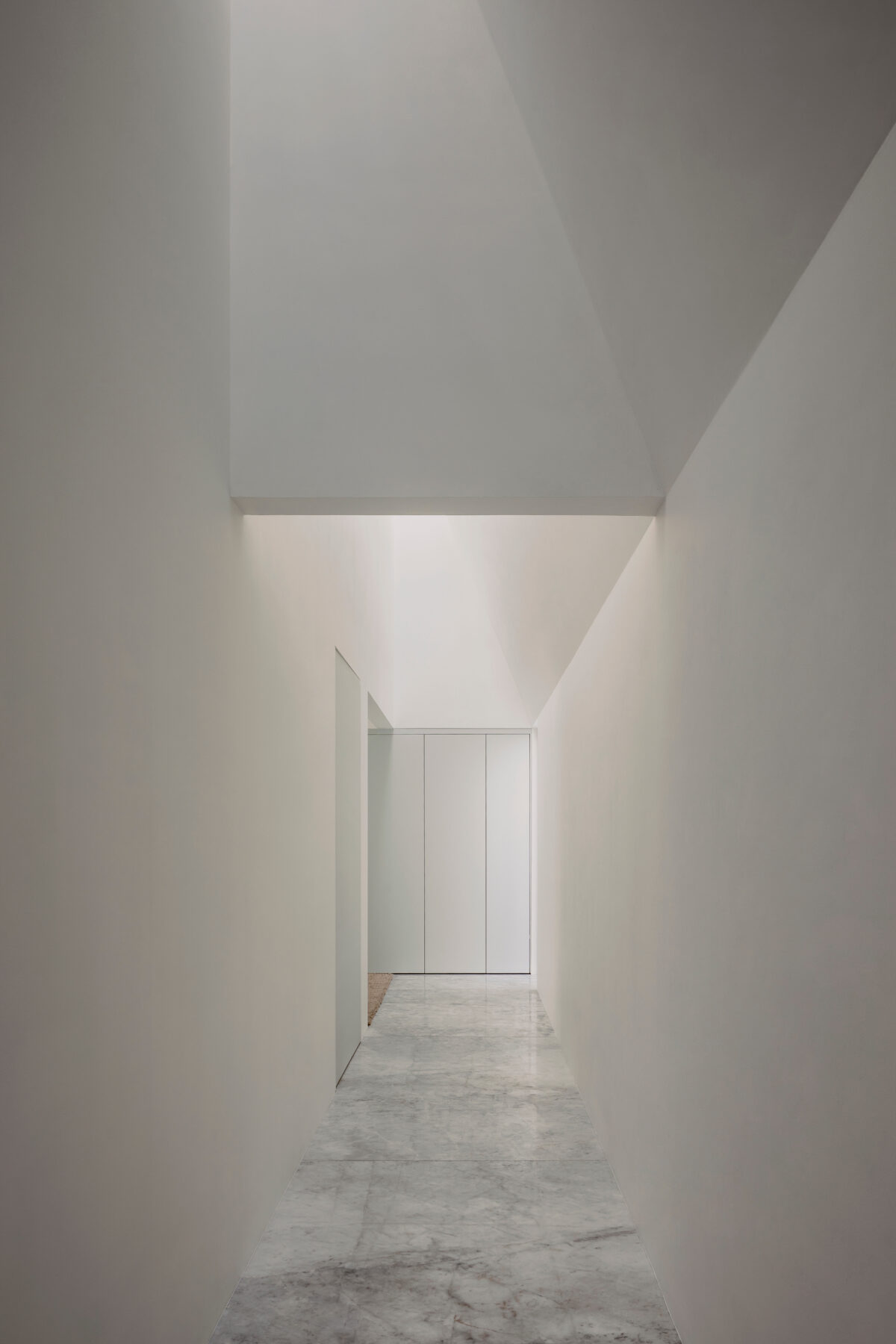
Although visually contrasting, this house becomes a catalyst for future transformations, as its simplicity invites creativity and individual expression.
Credits & Details
Architects: HW STUDIO , hwarcstudio@gmail.com Facebook: @hwstudioarquitectos Instagram: @hwstudioarq
Location: Morelia, Michoacán. Mexico
Completion Year: 2023
Size: 270 mts2
Lead Architects: Rogelio Vallejo Bores
Architects: Oscar Didier Ascencio Castro,Nik Zaret Cervantes Ordaz Clients: Cesar Cortes and Sonia Patricia Serrato
Photo credits: Cesar Bejar
About HW Studio
HW Studio is an architectural studio created in Morelia, Mexico in 2018, at the peak of a violent outbreak in the country’s history. The studio emerged with the purpose of stimulating and involving eastern and western artistic and philosophical principles in architectural processes to recreate spaces that evoked and promoted the threatened peace of Mexican citizens.
The studio begins its projects from a deep study of the client, the place, and itself, based on a meditation technique that facilitates space creation and design to convey a sense of serenity, tranquility, and silence in an increasingly noisy and violent world. Such proposals evade arbitrary and selfish responses.
HW Studio constantly seeks to promote an appreciation of what really matters in life, eliminating the non-essential from architecture to achieve states of inner peace through conscious contemplation. The studio conceives and strives to achieve architecture that manages to pause the mind and introduce it to silence, where small glimpses of peace can be attained.
The name HW Studio is derived from the union of the letter H, which in Spanish is silent and thus represents peacefulness, and the letter W, representing the Japanese concept of Wabi Sabi. The latter is a concept that the firm dares not explain, given that language is the enemy of understanding. “Architecture is basically a container of something. I hope they no longer enjoy the cup but the tea”. Yoshio Taniguchi
READ ALSO: Terrains Cultivés_Experiential Textiles-Clothing Recycling Center in Ioannina | Diploma thesis project by Evi Vardaka
